This is Part ONE!
The beginning of the Secession and its early achievements:
During the mid-1880s, the only place to study painting in Vienna was the Imperial Academy. Focusing on the study of “academic” and “naturalist” paintings, the artists of this school produced works of almost astonishing realism, lead by giants of the era such as Hans Makart. Works by such “history painters” (examples below) were giant in scale, brilliant in color, and often depicted historical scenes or allegorical themes. However, they adhered to strict guidelines for composition and content.
 |
| Makart: "The Five Senses", 1872 - 1879 |
A young Gustav Klimt was one of Makart’s students at the Academy. Klimt revered his teacher, accepted the historical style completely, and launched his own artistic career by collaborating with Makart on many projects - most notably some major permanent murals for the entryway to the Art Museum and several other significant buildings on the Ringstrasse. Here is an example of Klimt’s early work at the Academy, followed by two examples of such collaboration:
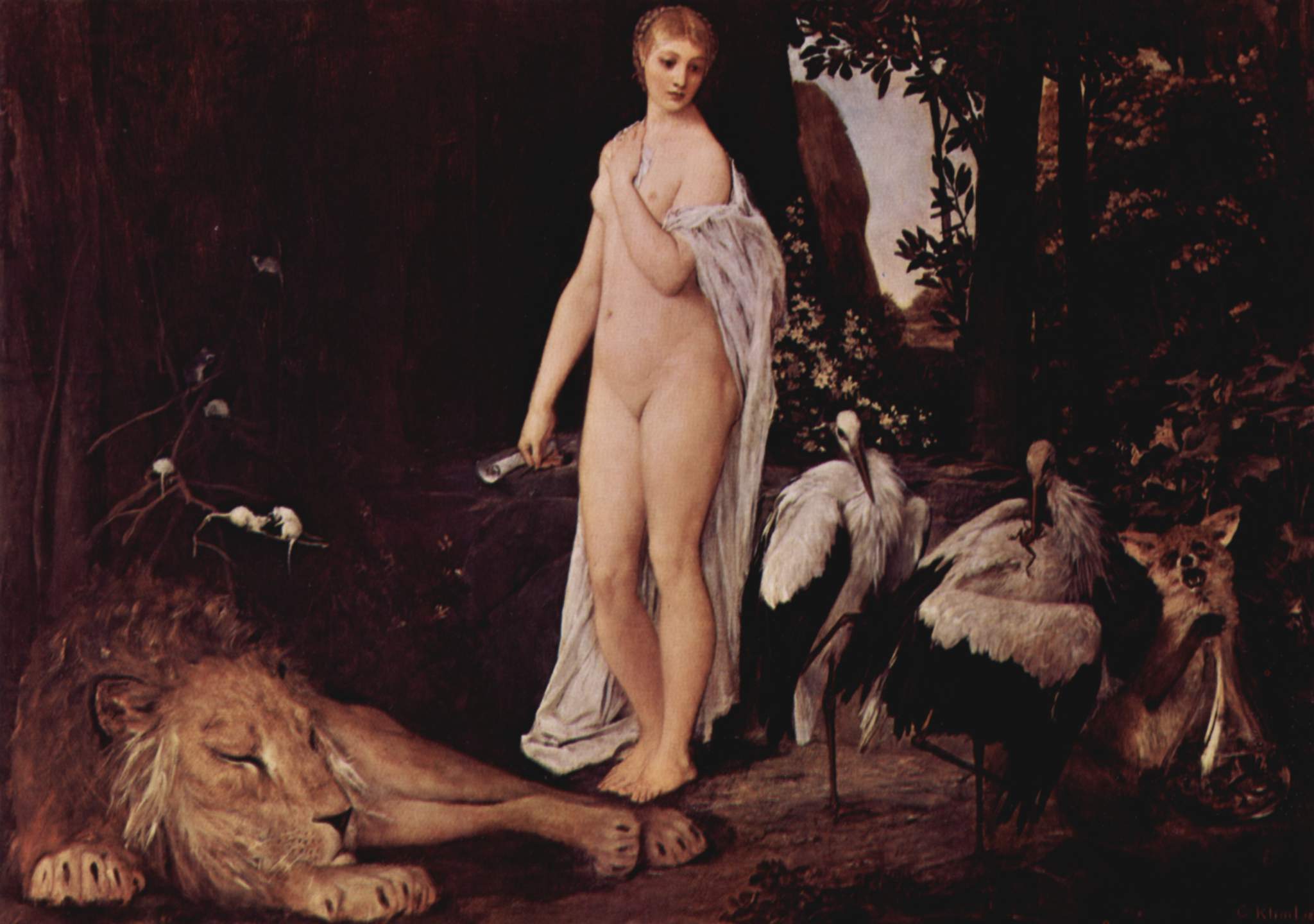 |
| Klimt "Die Fabel", 1883. Very lush, allegorical, and representative of both classical figure-painting and a dramatic naturalist landscape. |
 |
| "Athena" - a joint mural by Makart & Klimt, representing Ancient Greece. In the main stairway of the Kunsthistorisches Museum. |
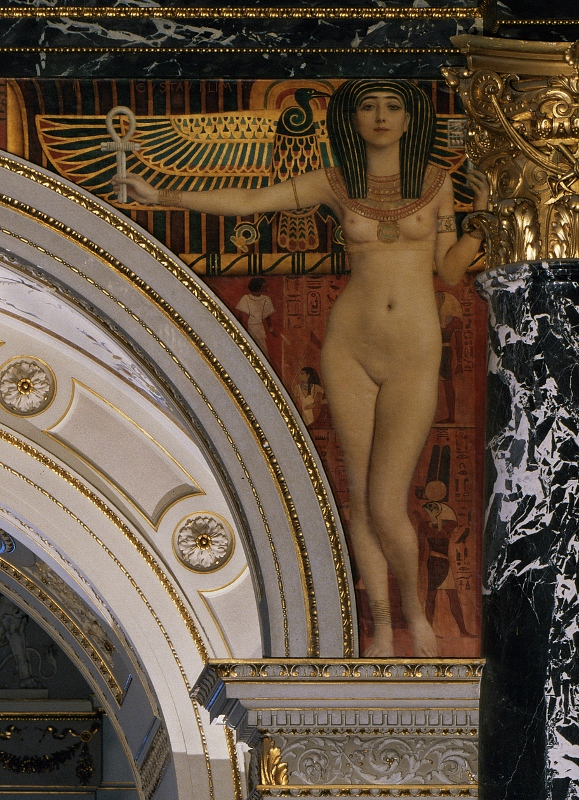 |
| On the opposite side of the same wall, representing the Museum's collection of artifacts from Egypt and the ancient world. |
Such work lead to major commissions for Klimt, including patronage by Franz Josef I. He was popular, desirable, and influential in taste, a rising star in Vienna … and slowly getting tired of imitating art that had come before.
In 1897, Klimt withdrew from the Academy, taking nineteen other students with him. This group had rebelled against the Academy’s devotion to historicism, and wished to set themselves up under a new philosophy, insisting that the dawning twentieth century - and every century - was entitled to its own style. Organized and designed by Joseph Maria Olbrich, they built the “Wiener Secessionsgebäude”, fondly known as the Secession House, that same year. This white, very square and spare building was meant as both a statement of their purpose and a gallery space. Over the door in gold letters, their motto states, Der Zeit ihre Kunst, der Kunst ihre Freiheit — “To the age its art, to art its freedom.”
Klimt was the first president of this new society. In defiance of the classical school they had just abandoned, he and and other subsequent leaders avoided laying down any particular doctrine of what the members’ art should be about - but lead the group more through a sense of adventurousness and innovation.
The group actually earned success and notoriety very quickly - their work was exhibited by the Paris International Exhibition as early as 1900 … partly due to Klimt’s charm as a popular figure. Their magazine, the Ver Sacrum, was devoted to design, art criticism, philosophical debates, and literary articles from as many famous writers of the day as they could find. One of the most recognizable drawings from this publication is Klimt’s “Nuda Veritas”, or Naked Truth - a bold ink drawing of Truth as a nude woman, holding up a mirror as if asking Viennese society to examine itself and the art. This iconic design became a feature of Secession art, including this painted version that appeared at the entrance of many exhibits.
 |
| The ink drawing NV, with quote from Schefer: "Truth is fire, and to speak the truth means to shine and to burn" |
Meanwhile, other Secession artists were physically changing Vienna’s streets. Architect Otto Wagner designed the Karlsplatz train station, which caused a great public outcry … initially, in shock as it was built to look so modern and dramatic, and again in its defense as a cultural landmark a hundred years later when the city considered demolishing it in 1981.
Josef Hoffmann entered the Viennese home. He created bold, geometric interiors and home furnishings, marrying the decorative to the utilitarian through the extravagance of clean lines in wide open spaces:
Koloman Moser worked in graphic designs for textiles, wallpaper, furniture, posters, books and more - his designs permeating the Viennese identity so much that he even designed their postage stamps:
So as the Secession movement grew, its numbers swelled with artists and innovators from all disciplines. Today, this outburst of bold design is known as “Jugendstil”, or Art Nouveau. It spread like wildfire throughout all of Europe as Vienna’s newborn passion for the decorative-but-useful met Paris’s commitment to gallery shows of modern art.
To be continued ... !




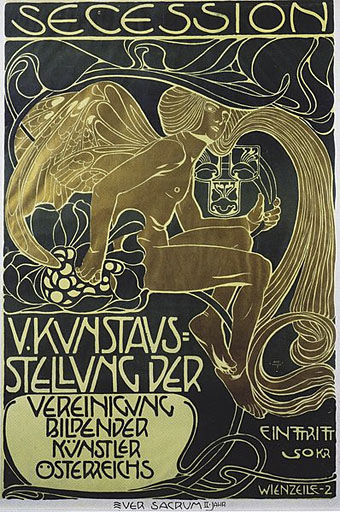
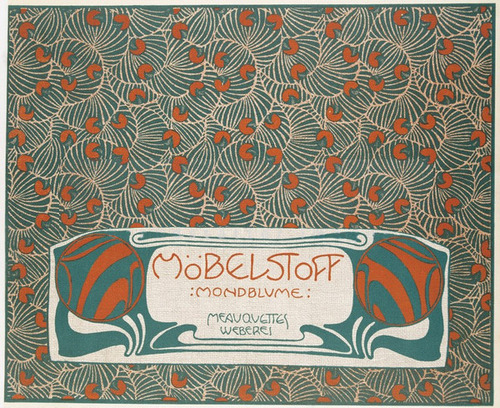
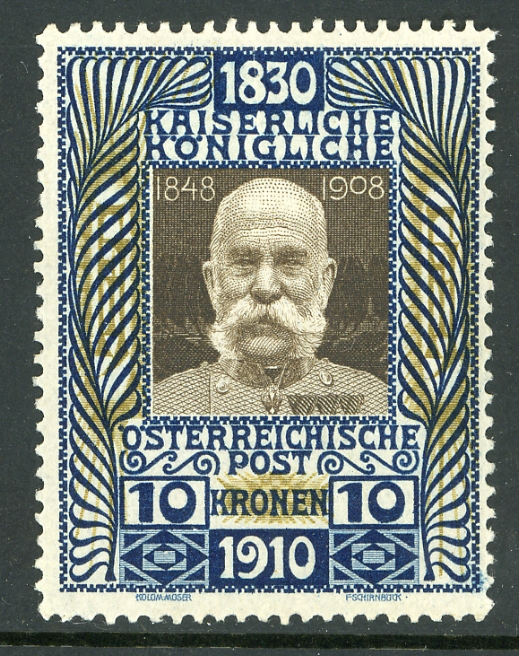
No comments:
Post a Comment
Note: Only a member of this blog may post a comment.